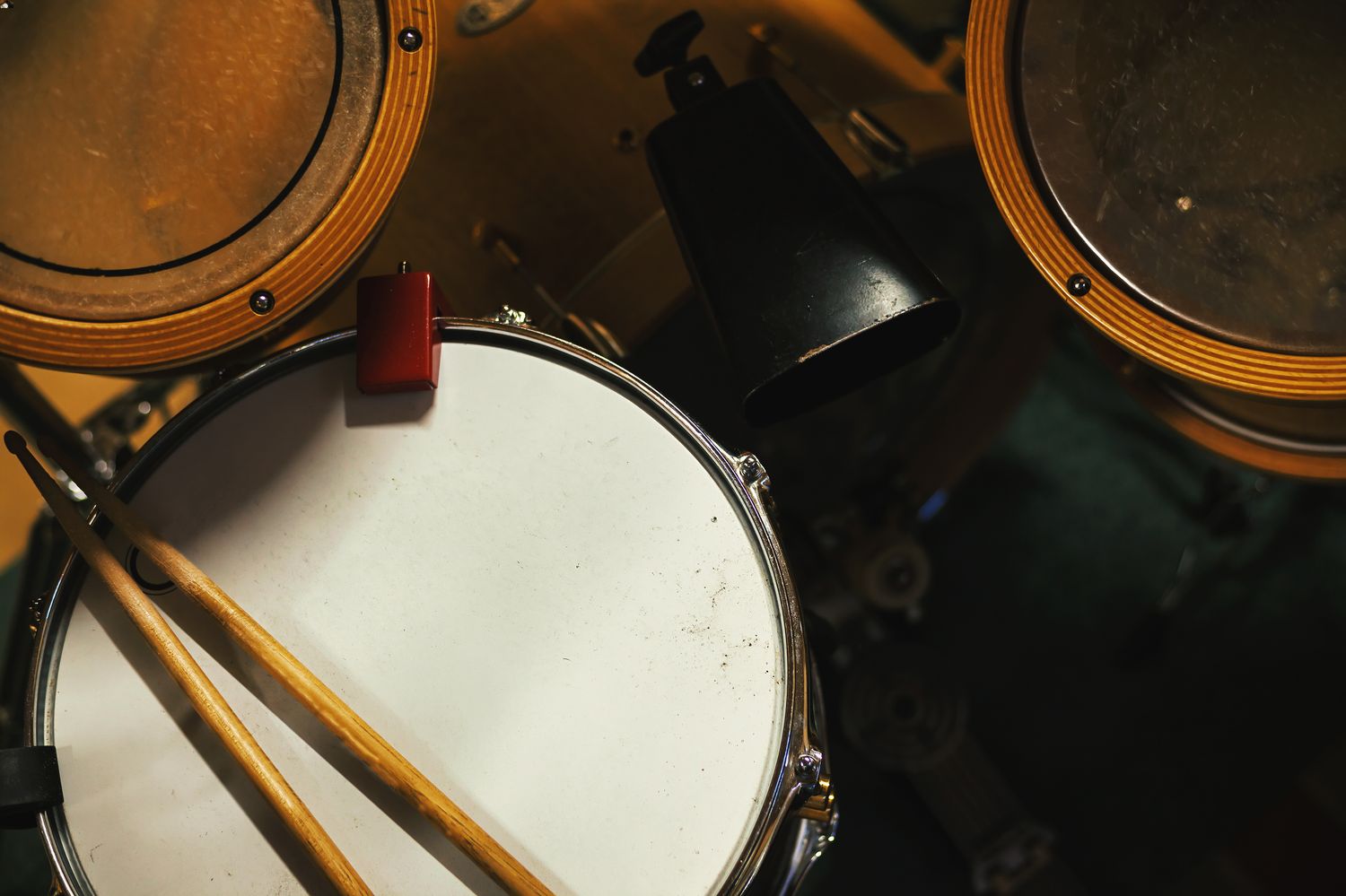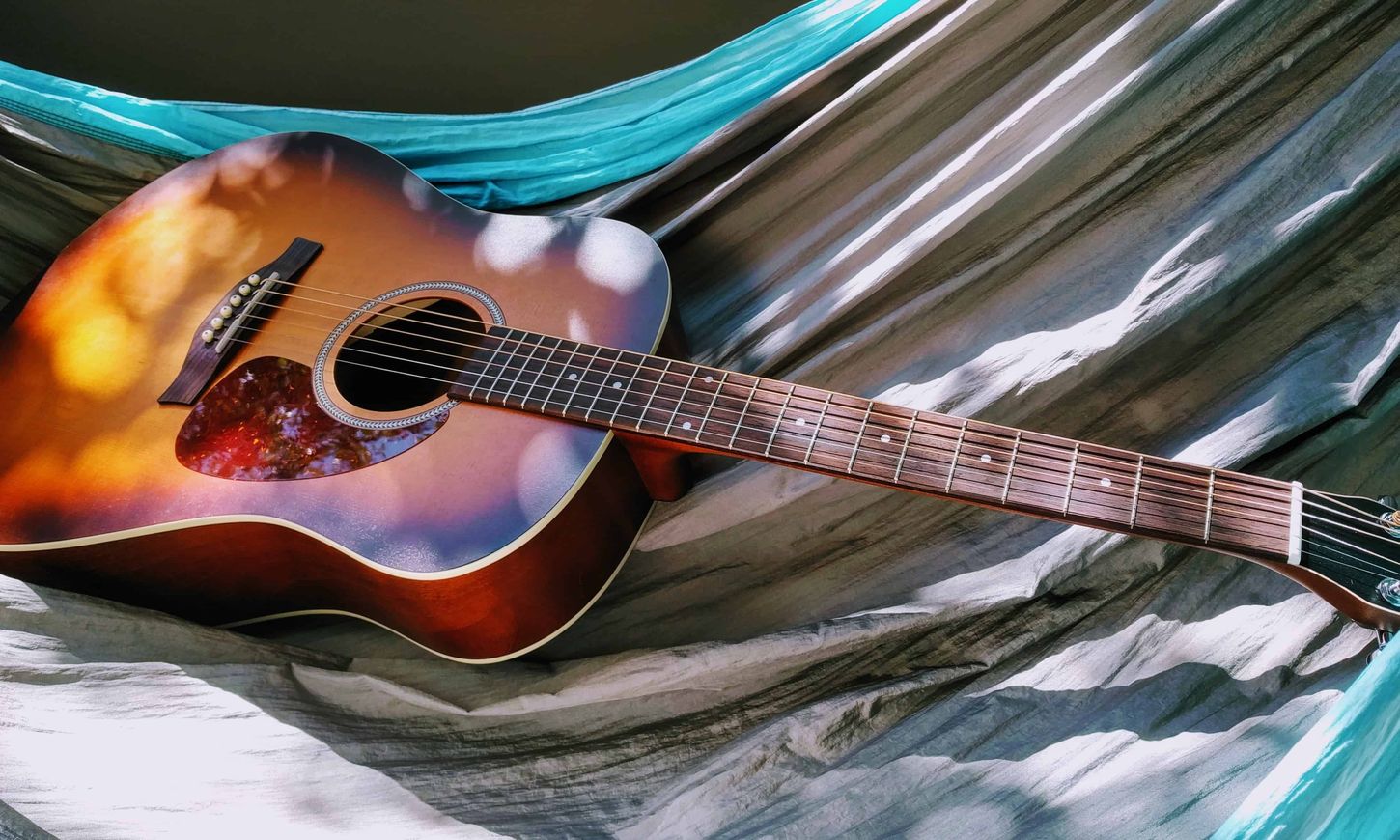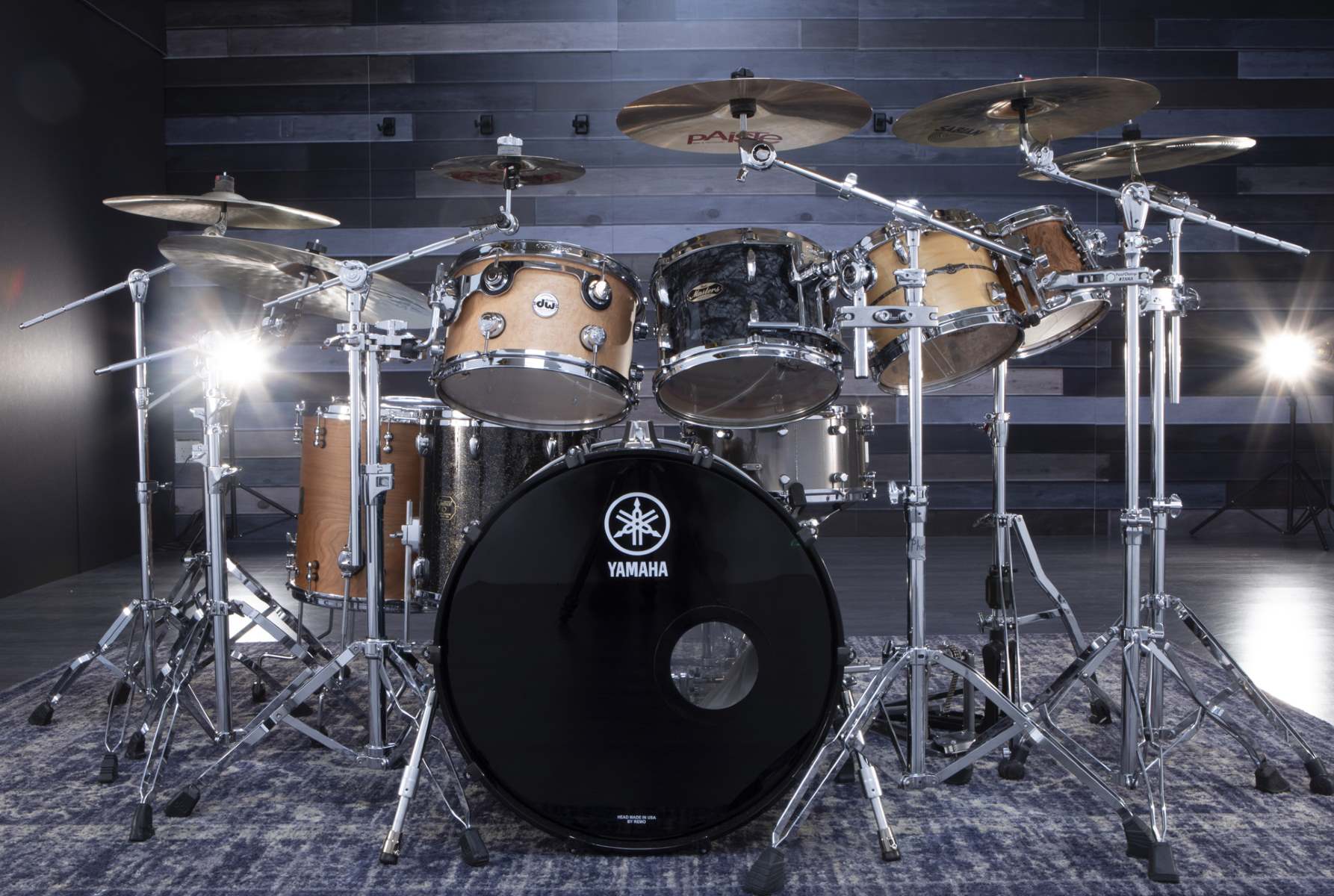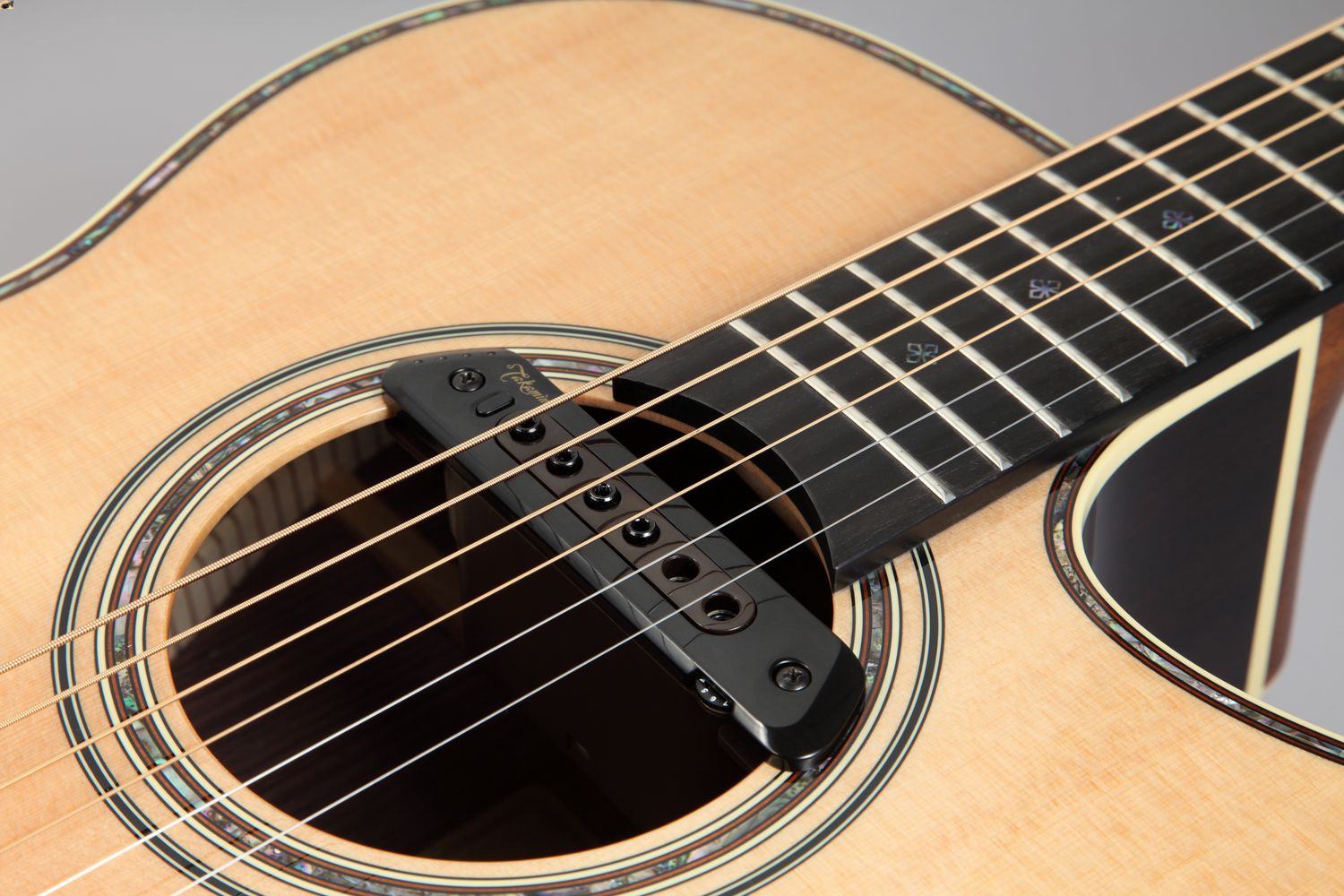Home>Production & Technology>Acoustic>How To Make Acoustic Drums Quieter


Acoustic
How To Make Acoustic Drums Quieter
Published: March 12, 2024
Learn how to make your acoustic drums quieter with these effective tips and techniques. Reduce noise without compromising the quality of your drumming experience. Ideal for drummers looking to minimize sound levels in practice or performance settings.
(Many of the links in this article redirect to a specific reviewed product. Your purchase of these products through affiliate links helps to generate commission for AudioLover.com, at no extra cost. Learn more)
Table of Contents
Introduction
Acoustic drums are a staple of live performances and studio recordings, renowned for their rich, organic sound and dynamic range. However, the powerful resonance and thunderous impact of acoustic drums can sometimes pose a challenge, especially in settings where noise control is crucial. Whether you're a passionate drummer looking to practice without disturbing your neighbors, a recording artist aiming to achieve a cleaner sound, or a live performer seeking to minimize stage volume, the quest to make acoustic drums quieter is a common pursuit.
In this comprehensive guide, we will explore various techniques and tools to effectively reduce the volume of acoustic drums without compromising their authentic character. From selecting the right drumheads to utilizing drum mutes and exploring electronic drum triggers, we will delve into practical strategies that cater to different preferences and requirements. By understanding the nuances of each method and its impact on sound quality, you can make informed decisions to tailor your drum kit for quieter environments.
Whether you're a seasoned drummer or a newcomer to the world of percussion, the quest for quieter acoustic drums is a journey that demands creativity, resourcefulness, and a keen ear for detail. Join us as we embark on this exploration, uncovering the art of taming the thunderous roar of acoustic drums while preserving their essence and musicality.
Understanding the Problem
When it comes to the challenge of making acoustic drums quieter, it's essential to grasp the underlying factors that contribute to their volume. Acoustic drums produce sound through the vibration of drumheads and the resonance of the drum shells, creating a powerful and immersive sonic experience. However, this very characteristic can also lead to excessive noise levels, making it difficult to control the sound output in certain environments.
The issue of drum volume becomes particularly pronounced in scenarios such as home practice sessions, small rehearsal spaces, or intimate live performances where maintaining a balanced sound is crucial. Excessive drum volume can overpower other instruments, distort audio recordings, and disrupt the peace and quiet of surrounding areas. Additionally, in urban living spaces or shared accommodations, the thunderous reverberations of acoustic drums can lead to conflicts with neighbors and housemates.
Understanding the problem of drum volume entails recognizing the impact it has on the overall musical experience and the surrounding environment. It involves acknowledging the need for a balanced sound output that allows the nuances of drumming to shine without overwhelming other elements. Moreover, it requires an appreciation for the diverse settings in which drummers seek to control volume, from professional studios to residential neighborhoods.
By comprehending the multifaceted nature of the problem, drummers and sound enthusiasts can approach the quest for quieter acoustic drums with a holistic mindset. This entails not only addressing the technical aspects of drum construction and setup but also considering the psychological and social dimensions of sound perception. With this comprehensive understanding, drummers can embark on a journey to explore effective solutions that cater to their specific needs and aspirations.
Choosing the Right Drumheads
Selecting the appropriate drumheads is a fundamental step in the pursuit of quieter acoustic drums. Drumheads, also known as drum skins, play a pivotal role in shaping the sound and volume of the drums. By understanding the different types of drumheads and their impact on volume control, drummers can make informed choices to achieve the desired sound while minimizing excessive noise.
Types of Drumheads
Drumheads come in various configurations, each offering distinct tonal characteristics and volume levels. When aiming to reduce drum volume, opting for thicker drumheads can be advantageous. Thicker drumheads dampen the vibrations and resonance, resulting in a more controlled sound output. Conversely, thinner drumheads tend to produce a brighter and louder sound, making them less suitable for volume reduction purposes.
Coated vs. Clear Drumheads
Another factor to consider is the surface texture of the drumheads. Coated drumheads, featuring a textured coating, offer a warmer and drier sound compared to clear drumheads. This difference in tonal quality can influence the perceived volume of the drums. Coated drumheads tend to produce a slightly subdued sound, making them a favorable choice for those seeking to tame the overall drum volume.
Muffling Options
In addition to selecting the appropriate drumhead type, drummers can further tailor the volume of their drums by incorporating internal or external muffling options. Internal muffling involves placing dampening materials, such as foam or gel pads, inside the drum shell to absorb excess vibrations and control resonance. External muffling, on the other hand, utilizes accessories like drum rings or specialty dampening pads to regulate the drum sound from the outside.
Experimentation and Fine-Tuning
Ultimately, the process of choosing the right drumheads for volume control involves a degree of experimentation and fine-tuning. Drummers are encouraged to explore different combinations of drumhead types, thicknesses, and muffling techniques to achieve the optimal balance between sound quality and volume reduction. By leveraging the diverse options available in the realm of drumheads, drummers can sculpt a personalized drum setup that caters to their specific volume management needs.
In the quest for quieter acoustic drums, the selection of drumheads serves as a foundational element that significantly influences the overall sound output. By considering the thickness, texture, and muffling options of drumheads, drummers can embark on a transformative journey to tailor their drum kit for quieter environments, all while preserving the essence of acoustic drumming.
Using Drum Mutes
Drum mutes, also known as drum dampeners or silencers, are specialized accessories designed to reduce the volume of acoustic drums while preserving their natural feel and response. These innovative tools offer an effective means of controlling drum volume without compromising the integrity of the instrument's sound. By strategically placing drum mutes on various components of the drum kit, drummers can achieve significant noise reduction while retaining the expressive qualities of their playing.
Types of Drum Mutes
Drum mutes are available in a variety of forms, catering to different drum types and sizes. Common types of drum mutes include foam pads, rubber dampeners, and mesh heads. Foam pads are placed on drumheads to absorb the impact and reduce the resonance, resulting in a softer and more controlled sound. Rubber dampeners, often utilized on cymbals and drumheads, offer a versatile solution for attenuating volume while maintaining a natural rebound. Mesh heads, typically used on electronic drum kits, simulate the feel of acoustic drumheads while providing substantial volume reduction.
Application and Placement
When using drum mutes to make acoustic drums quieter, strategic placement is key. Drummers can position foam pads on the drumheads to dampen the impact and minimize the reverberations, effectively reducing the overall volume. Rubber dampeners can be applied to cymbals to mitigate the sharpness of their sound, resulting in a more subdued and balanced tonal output. Additionally, utilizing mesh heads on drums allows for a quieter playing experience without sacrificing the authentic feel and response of acoustic drums.
Advantages of Drum Mutes
The utilization of drum mutes offers several advantages beyond volume reduction. In addition to quieter practice sessions, drum mutes facilitate focused and nuanced playing, allowing drummers to hone their technique and dynamics without being hindered by excessive volume. Furthermore, drum mutes can be invaluable tools for recording sessions, enabling precise control over drum sound levels and minimizing bleed in microphones, thus contributing to cleaner and more professional recordings.
Versatility and Customization
One of the most compelling aspects of drum mutes is their versatility and customization options. Drummers can mix and match different types of mutes to tailor the volume and tonal characteristics of each drum and cymbal in their kit. This level of customization empowers drummers to create a personalized playing experience that aligns with their specific volume management needs and artistic preferences.
Embracing the Potential of Drum Mutes
In the pursuit of quieter acoustic drums, the integration of drum mutes represents a transformative approach that harmonizes volume control with musical expression. By harnessing the capabilities of drum mutes and exploring their diverse applications, drummers can embark on a journey of sonic exploration, discovering new dimensions of creativity and adaptability within their drumming endeavors.
Adjusting the Drum Kit Setup
Adjusting the drum kit setup is a pivotal aspect of tailoring acoustic drums for quieter environments. By strategically configuring the placement and construction of the drum kit components, drummers can exert precise control over volume levels while optimizing the overall sound output. This deliberate approach to adjusting the drum kit setup encompasses a range of considerations, from the positioning of drums and cymbals to the incorporation of specialized accessories for volume management.
Drum and Cymbal Placement
The placement of drums and cymbals within the drum kit plays a significant role in determining the volume and projection of the sound. When aiming to reduce drum volume, drummers can strategically position the drums and cymbals to minimize their resonance and impact. Placing the drums closer together can help contain the sound and reduce the spread of vibrations, resulting in a more focused and controlled sonic output. Additionally, angling the drums and cymbals slightly downward can direct the sound towards the drummer, effectively dampening the overall volume perceived by surrounding areas.
Drum Shell Modifications
Modifying the drum shells can also contribute to volume control and sound manipulation. By adding internal dampening materials, such as foam or fabric, inside the drum shells, drummers can absorb excess vibrations and resonance, leading to a quieter and more balanced sound. Furthermore, exploring the option of drum shell reinforcement or customization with specialized coatings can influence the tonal characteristics and volume output of the drums, offering a tailored approach to volume management within the drum kit setup.
Specialty Accessories
Incorporating specialty accessories designed for volume control can further enhance the effectiveness of adjusting the drum kit setup. Products such as bass drum mufflers, cymbal sleeves, and drum risers provide targeted solutions for reducing the volume of specific drum components. Bass drum mufflers attenuate the low-frequency resonance of the bass drum, while cymbal sleeves minimize the sustain and projection of cymbals, contributing to an overall quieter drum kit. Drum risers, which elevate the drum kit off the ground, can help isolate the sound and reduce the transmission of vibrations, making them valuable tools for volume management in various settings.
Fine-Tuning and Experimentation
Ultimately, the process of adjusting the drum kit setup for quieter acoustic drums involves a degree of fine-tuning and experimentation. Drummers are encouraged to explore different configurations, placements, and accessories to achieve the optimal balance between sound quality and volume reduction. By embracing a spirit of creativity and adaptability, drummers can unlock the full potential of their drum kit, sculpting a personalized setup that aligns with their volume management goals and artistic vision.
In the pursuit of quieter acoustic drums, the art of adjusting the drum kit setup emerges as a transformative endeavor that empowers drummers to shape their sonic environment with precision and ingenuity. Through thoughtful adjustments and strategic enhancements, drummers can embark on a journey of sonic exploration, discovering new dimensions of control and expression within their drumming pursuits.
Using Electronic Drum Triggers
In the quest for quieter acoustic drums, the utilization of electronic drum triggers presents a revolutionary approach that seamlessly integrates modern technology with traditional percussion. Electronic drum triggers are specialized devices designed to capture the impact and dynamics of acoustic drumming, converting the physical strikes on drumheads and cymbals into electronic signals. By harnessing the capabilities of electronic drum triggers, drummers can unlock a myriad of volume control options and sonic possibilities, transcending the limitations of conventional acoustic setups.
Functionality and Integration
Electronic drum triggers are typically affixed to the drumheads and cymbals, where they detect the vibrations and impulses generated by the drummer's strikes. These triggers then transmit the captured signals to a sound module or electronic drum brain, where they are converted into electronic audio signals. This seamless conversion process enables drummers to produce electronic sounds while retaining the authentic feel and response of acoustic drumming, offering a versatile platform for volume management and sonic exploration.
Volume Control and Sound Manipulation
One of the most compelling aspects of electronic drum triggers is their capacity for precise volume control and sound manipulation. By interfacing with a sound module, drummers can adjust the volume levels of individual drums and cymbals, effectively tailoring the sonic output to suit quieter environments. This granular control over volume allows drummers to attenuate the impact of acoustic drums while preserving the expressive nuances of their playing, offering a dynamic and adaptable solution for volume management.
Sound Expansion and Customization
Beyond volume control, electronic drum triggers open doors to expansive sound expansion and customization possibilities. Drummers can access a diverse array of electronic sounds and samples through the sound module, enriching their sonic palette with an extensive range of tones and textures. This versatility empowers drummers to craft immersive and eclectic soundscapes, transcending the traditional sonic boundaries of acoustic drums and embracing a boundless realm of creative expression.
Performance and Recording Applications
The integration of electronic drum triggers extends beyond volume management, finding valuable applications in live performances and recording sessions. In live settings, electronic drum triggers enable drummers to achieve balanced sound levels while delivering dynamic and engaging performances. In recording environments, electronic drum triggers facilitate precise sound isolation and control, contributing to cleaner and more professional audio productions.
Embracing Innovation and Creativity
In the pursuit of quieter acoustic drums, the adoption of electronic drum triggers represents a paradigm shift that celebrates innovation and creativity. By embracing the fusion of acoustic authenticity with electronic versatility, drummers can embark on a transformative journey of sonic exploration, transcending the confines of traditional volume limitations and unlocking new dimensions of musical expression.
In summary, the integration of electronic drum triggers offers a compelling avenue for drummers to sculpt quieter acoustic drums while embracing a world of sonic innovation and adaptability. Through the seamless synergy of acoustic resonance and electronic versatility, drummers can embark on a boundless journey of sonic exploration, redefining the possibilities of volume control and creative expression within the realm of percussion.
Conclusion
In the realm of percussion, the pursuit of quieter acoustic drums is a multifaceted journey that intertwines technical ingenuity with artistic sensibility. As drummers navigate the diverse landscapes of volume control and sonic expression, they encounter a rich tapestry of techniques and tools that harmonize the thunderous resonance of acoustic drums with the need for balanced sound output. From the selection of drumheads to the integration of electronic drum triggers, each facet of this exploration unveils a spectrum of possibilities, inviting drummers to sculpt their sonic environment with precision and creativity.
The art of making acoustic drums quieter transcends mere volume reduction; it embodies a profound quest for sonic balance and adaptability. By understanding the nuanced interplay of drum construction, setup adjustments, and innovative accessories, drummers can orchestrate a symphony of sound that resonates harmoniously in diverse settings. Whether in the intimacy of a practice room, the controlled environment of a recording studio, or the electrifying energy of a live performance, the ability to tailor the volume of acoustic drums empowers drummers to craft immersive and captivating musical experiences.
As drummers navigate the labyrinth of volume management, they are invited to embrace a spirit of experimentation and exploration. The journey of sculpting quieter acoustic drums is not merely a technical endeavor; it is a canvas for artistic expression and sonic innovation. It beckons drummers to weave their unique narratives through the rhythmic tapestries they create, infusing each beat with intention and nuance.
In the grand finale of this odyssey, the convergence of technical prowess and artistic vision culminates in a symphony of quieter acoustic drums that resonate with clarity and purpose. The drum kit, once a tempestuous force of sound, now stands as a testament to the ingenuity and adaptability of the drummer. It embodies a harmonious fusion of tradition and innovation, where the timeless allure of acoustic drums converges with the boundless possibilities of modern technology.
As the curtain falls on this exploration, the quest for quieter acoustic drums emerges not as a mere endeavor in volume reduction, but as a celebration of the transformative power of sound. It is a testament to the resilience and creativity of drummers, who navigate the ever-evolving landscapes of music with unwavering passion and ingenuity. In the symphony of quieter acoustic drums, we find not only a triumph of technical mastery, but a resounding testament to the enduring spirit of sonic exploration and the timeless allure of percussion.











